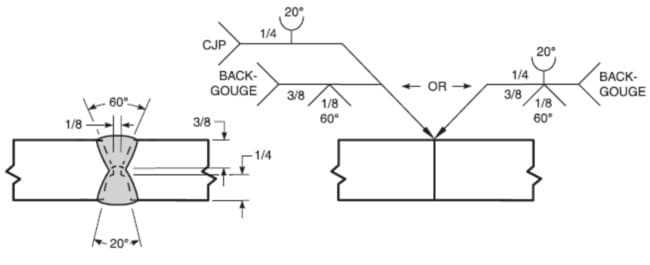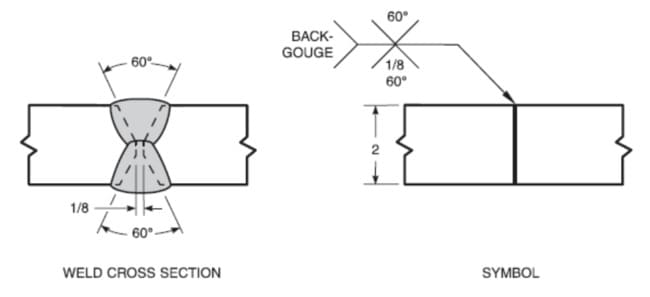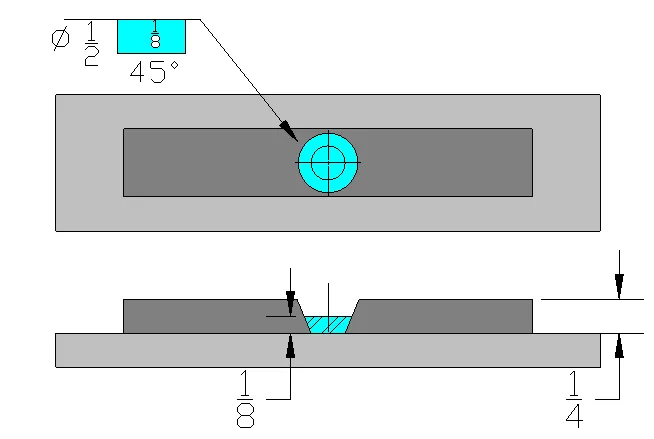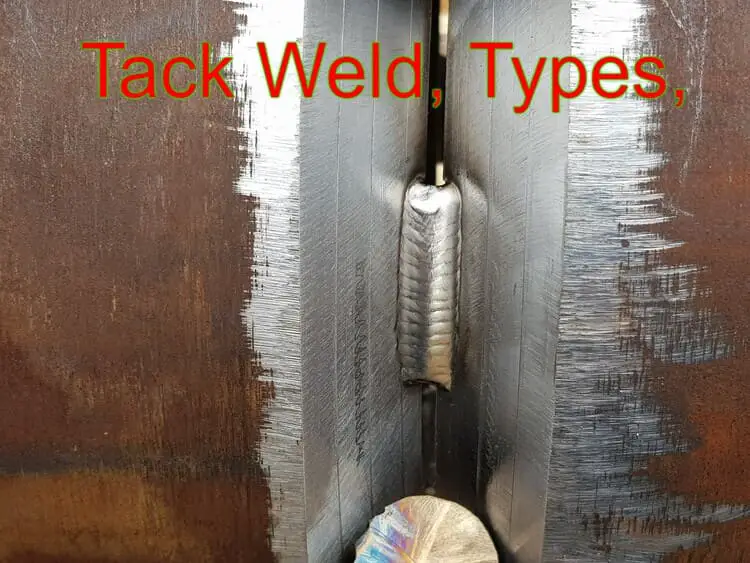Welding symbols are the language of the fabrication industry, guiding welders and inspectors alike on how to achieve the desired results in a welding project. They are universally accepted shorthand that convey complex instructions without the need for lengthy explanations.
One such symbol that holds significant importance in the world of welding is the Back Gouging Welding Symbol. This article aims to demystify this symbol, providing an in-depth understanding of what it represents, its role, and why it’s crucial in certain welding scenarios.
What is Back Gouging?
Back gouging is a welding preparation technique used primarily in full penetration welds. The process involves removing weld and base metal from the reverse side of a welded joint to facilitate complete joint penetration during a subsequent welding operation.
Back gouging is crucial for achieving sound weld quality, particularly in applications where the weld’s reverse side can’t be accessed for welding. This technique is commonly used in industries like shipbuilding, construction, and pipelines, where the integrity and strength of the weld are paramount.
The Back Gouging Welding Symbol
There is no specific back gouge welding symbol in AWS A2.4 and ISO 2553. Usually, Back Gouging welding symbol is specified by writing BACK-GOUGING in the tail section as shown in below figure.

In addition to other joint specifics, the welding symbol must contain a reference to backgouging in its tail. When it comes to double-groove welds that aren’t symmetrical, the symbol must illustrate the necessary groove depth for each joint side, along with the essential groove angles. However, for single-groove welds without a root face or symmetrical double-groove welds with no root face, the welding symbol isn’t required to include the depth of groove dimension.

When the back gouging process is to be followed by welding, the symbol for the type of weld is added to the back gouge symbol. This additional symbol is placed on the side of the reference line opposite the back gouge symbol.
Interpreting the Symbol
Understanding this symbol correctly is crucial for achieving the desired weld quality. The back gouging symbol on a welding diagram indicates that the welder must gouge out the reverse side of the weld, down to the base metal, before depositing more weld metal. This ensures that the joint is fully penetrated and strong.
Importance of Back Gouging
The back gouging technique plays a key role in ensuring the structural integrity of the weld, especially in full penetration welds. It allows the welder to achieve a sound joint with full penetration and fusion. Without it, there could be incomplete fusion or penetration, leading to potential flaws and compromises in the joint’s strength.
In conclusion, the back gouging welding symbol is an essential element in welding diagrams, communicating critical information to the welder. Understanding this symbol and the technique it represents is key to executing high-quality, full penetration welds.
As with all welding symbols, proper training and practice are needed to interpret and execute the instructions correctly. Remember, when it comes to welding, every symbol and technique has a purpose – a purpose that typically revolves around safety, integrity, and durability.








